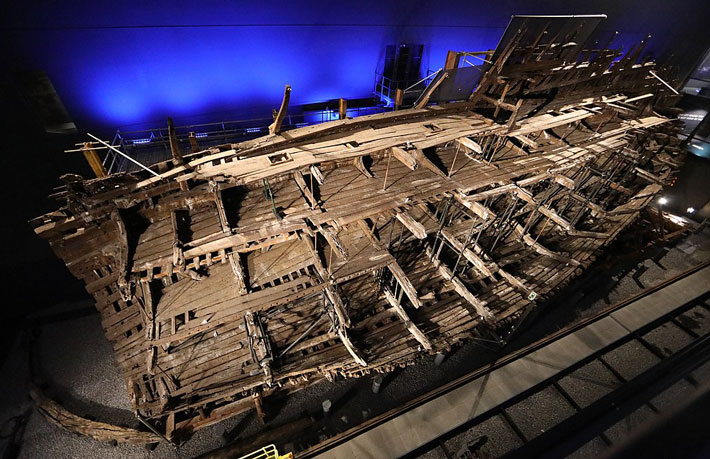
PORTSMOUTH, ENGLAND—Scientists have used X-rays and scanning electron microscopy to identify deposits of acid-forming nanoparticles left behind by marine bacteria in the hull of the Mary Rose, a warship built by King Henry VIII that sank in the English Channel in 1545 during the Battle of the Solent, according to a Live Science report. The ship was raised in 1982 and treated with polyethylene glycol (PEG) to stabilize the waterlogged wood, but sulfur-producing bacteria can survive the process. Serena Cussen of the University of Sheffield said that the breakdown of PEG over time, and the combination of oxygen with the byproducts produced by the marine bacteria, can cause wood to deteriorate. Conservators of the Mary Rose will now be able to design targeted treatments to remove these dangerous deposits, Cussen explained. For more, go to "History's 10 Greatest Wrecks...Mary Rose and Vasa."










